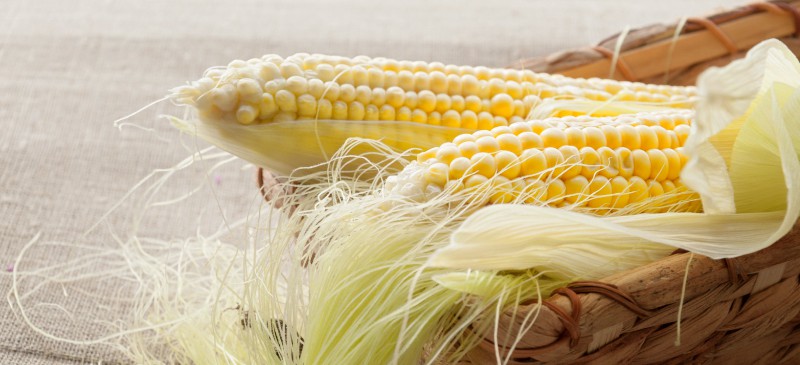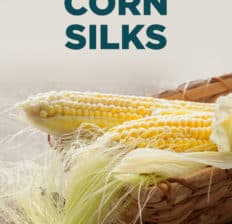This Dr. Axe content is medically reviewed or fact checked to ensure factually accurate information.
With strict editorial sourcing guidelines, we only link to academic research institutions, reputable media sites and, when research is available, medically peer-reviewed studies. Note that the numbers in parentheses (1, 2, etc.) are clickable links to these studies.
The information in our articles is NOT intended to replace a one-on-one relationship with a qualified health care professional and is not intended as medical advice.
This article is based on scientific evidence, written by experts and fact checked by our trained editorial staff. Note that the numbers in parentheses (1, 2, etc.) are clickable links to medically peer-reviewed studies.
Our team includes licensed nutritionists and dietitians, certified health education specialists, as well as certified strength and conditioning specialists, personal trainers and corrective exercise specialists. Our team aims to be not only thorough with its research, but also objective and unbiased.
The information in our articles is NOT intended to replace a one-on-one relationship with a qualified health care professional and is not intended as medical advice.
Impressive Corn Silk Benefits for Inflammation, Cholesterol & More
November 21, 2021

You know the long, silky threads that you throw away from peeling corncobs for cooking? That stuff is called corn silk, and it has actually been used in traditional Chinese and Native American medicines for centuries.
It’s one of the most nutritious edible food parts that most people don’t realize you can not only eat, but use as a natural remedy.
This plant material contains a slew of beneficial compounds and has been used therapeutically for conditions like malaria, high blood pressure, bladder infections and inflammation. Today, it’s available in tea and supplement forms, and it has been getting even more attention recently for its possible weight loss effects — although more research is needed to understand its use for fat accumulation.
For now, eating silks in normal food amounts is considered safe and provides important nutrients.
What Is Corn Silk?
Corn silk, or Stigma maydis, is the pale, thread-like strands that grow within corn husk. The thin fibers exist to trap pollen for pollination, which supports corn growth.
The silks are beneficial for humans too and have been used in traditional medicine in countries including the United States, China, Turkey and France.
Corn silk can be used in fresh and dried form, and it’s often used to make tea.
Benefits/Uses
1. Good Source of Antioxidants
Stigma maydis is rich in phenolic compounds, especially flavonoids. Studies on the plant fiber show that it provides strong antioxidant activity by inhibiting free radical scavenging.
Animal studies show that corn silks have anti-inflammatory effects and can be used to suppress pro-inflammatory mediators. Researchers believe that the silks may be useful for the treatment of inflammatory diseases related to oxidative stress.
2. Rich in Nutrients
We know that the nutritional value of corn is impressive, but its silks are also rich in macro- and micronutrients. It contains:
- proteins
- carbohydrates
- vitamins
- calcium
- potassium
- magnesium
- sodium salts
It also features volatile oils and steroids, including sitosterol and stigmasterol, alkaloids, and saponins.
3. Improves Cholesterol Levels
There’s evidence to suggest that consuming the flavonoids in Stigma maydis can help improve cholesterol levels.
In one study, administration of flavonoids from corn silk extract resulted in significantly lowers levels of triglycerides and LDL cholesterol. There was no difference in HDL cholesterol levels, but the data shows that the silks may have potential anti-hyperlipidemic effects.
4. Reduces Blood Pressure
Although more clinical trials are needed, there’s some research indicating that corn silk tea is useful for patients with hypertension. The main outcome of drinking the tea was total blood pressure lowering, but researchers note that using the tea plus antihypertensive drugs may be more effective.
5. May Reduce Blood Sugar
Studies indicate that consuming these corn threads has anti-diabetic effects, and they’ve been proven to improve glucose tolerance in rats. Although more research involving humans is necessary, the animal studies demonstrate corn silk’s anti-diabetic benefits.
6. May Work as a Diuretic
Research suggests that corn silk soothes and relaxes the lining of the bladder and urinary tubules, so it may be helpful in reducing irritation and increasing urine secretion.
The silks have been found to have diuretic effects and urine flow increased after consumption. Because it works as a diuretic, eating this part of the corn plant can also decrease potassium levels.
Stigma maydis was also used in traditional medicine to treat urinary tract infections. Although research on this possible corn silk benefit is limited, its diuretic properties may support urinary tract health.
7. May Help Improve Depression
Although more research involving humans is needed, this is evidence involving mice suggesting that corn silk has anti-depressant activity and can improve the “excitation spirit” and lengthen activity time.
8. May Aid Weight Loss
There’s evidence from studies conducted on mice to support corn silk’s benefits for weight loss, but human trials are needed.
In one study, researchers concluded that corn silk extract inhibited fat accumulation and fat synthesis, while promoting the expression of genes involved in fat oxidation. The silks may reduce body fat accumulation, at least in animals.
Dosage
Stigma maydis can be consumed raw, dried, in tea form or as a supplement. It is considered safe when consumed in normal food amounts, but there is no recommended dose when using it in supplement form.
Most supplements recommend doses of 400–450 milligrams two to thre times per day. However, some studies indicate that higher doses are for safe for human consumption.
At this time, with limited evidence of its safety and efficacy, sticking to smaller doses that are suggested on product labels is recommended.
You can also find corn silk tea in most health food stores or purchase it online. Opt for teas made from a trustworthy company that uses USDA-certified, non-GMO ingredients. Check the ingredient label to be sure that there are no unwanted additives.
Risks and Side Effects
Corn silk is considered safe when consumed in amounts normally found in food. Consuming it in larger amounts is not recommended for women who are pregnant because the plant material may stimulate the uterus.
People with diabetes should consume corn silk with caution, as it can naturally reduce blood sugar levels and may interfere with maintaining healthy levels. It may also reduce potassium levels, so people with low potassium should not use it.
People using medications for diabetes, high blood pressure, inflammation and blood clots should speak to a doctor before using corn silk. It shouldn’t be used therapeutically with diuretics, either.
It’s possible to be allergic to corn silk, so if you experience itching, skin rashes or redness after consumption, discontinue use.
Conclusion
- Corn silks are the long, thread-like strands that are found covering corn on the cob. They’re often peeled off and thrown out, but did you know that these silks have a long history of medical use in Chinese and Native American traditional medicines?
- The silks are rich in nutrients, especially antioxidants, vitamins and minerals. They help inhibit free radical damage, work as a diuretic, improve cholesterol and blood sugar levels, and may even fight depression.
- You can find Stigma maydis in raw, dried, tea and supplement forms. Stick to low doses unless suggested otherwise by a health care professional. If you are taking medications for diabetes, heart disease or an inflammatory condition, check with your doctor about possible interactions.













